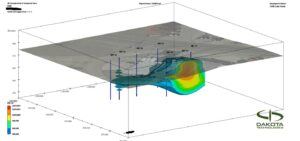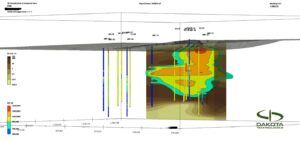 By Conner McCluer, Project Manager
By Conner McCluer, Project Manager
I have spent much of my professional career focusing on the ins and outs of Leaking Underground Storage Tank (LUST) assessment work. Sure, I have experience in other subsets of the environmental consulting world, but LUST work has claimed a large portion of my brain’s real-estate since entering the consulting world as an entry level geologist (the other portions are controlled by my 2-year-old son and my wife).
I don’t presume that my professional opinions represent those of the environmental consulting industry as a whole, but I do think technologies like High-Resolution Site Characterization (HRSC) are important and could very well be the future in addressing LUST sites. Now let’s get into it.
The Traditional LUST Assessment
If you have been in the environmental consulting world for a certain amount of time, you can grow accustomed to putting LUST sites in a box and going down the same old assessment path (who doesn’t love a good go-to template?).
When beginning work on a new LUST assessment site, the usual approach involves the traditional subsurface assessment technique of taking soil and groundwater samples and potentially installing groundwater monitoring wells on the property to determine if the site has been impacted by a petroleum release. However, as an environmental consultant, I always try to ask myself “is this the best assessment method for all sites?”
The traditional method works well, but not all LUST assessment sites are created equally. So, is there an alternative assessment method worth looking into?
High-Resolution Site Characterization (HRSC)
I would argue that HRSC assessment should be on the short list for methods when planning for site assessment. HRSC techniques provide more detailed information regarding the distribution of contaminants in the subsurface and the characteristics of subsurface soil and groundwater.
This type of assessment is driven by a suite of different subsurface assessment tools. The most common types of assessment tools used in HRSC are detailed below.
The HRSC Tool Kit
Laser-Induced Fluorescence (LIF)
This process delineates free product [light non-aqueous phase liquid (LNAPL)] and gasoline and diesel contaminants in the subsurface. It also utilizes an ultraviolet light from a high-energy laser that causes polycyclic aromatic hydrocarbons (PAH) to emit fluorescence that is detected by an optical detection system mounted on the probe (think of a blacklight effect).
Membrane Interface Probe (MIP)
This process delineates subsurface volatile organic compounds. MIP applies heat at discrete intervals as the tool is being advanced and is designed to detect volatile organic compounds (VOC) that diffuse through a semipermeable membrane and are brought to the surface with a carrier gas. The concentration of the VOCs is then measured using a PID to detect primarily aromatic petroleum compounds.
Hydraulic Profiling Tool (HPT)
This process estimates soil permeability.
Electrical Conductivity (EC) Probes
This process measures soil electrical conductivity, which is an indication of soil grain size.
The Future of LUST Contaminant Assessment
All of these tools can be applied using a direct push technology (DPT) drill rig. One of the most beneficial aspects of HRSC assessment is the ability to determine if LNAPL present on a site is gasoline, diesel, or a combination of the two and what percentages of the LNAPL is gasoline or diesel. This can be a great tool when dealing with a comingled plume and a comingled source [like a UST and aboveground storage tank (AST) site].
Another benefit of HRSC assessment is its ability to identify potential preferential contaminant pathways and/or retention zones. The combination of real-time subsurface data collection and laboratory analysis of soil and groundwater samples collected during an assessment can provide an in-depth visualization of the current environmental state of a site. Stills from 3D modeling of a HRSC assessment that I was previously involved in are shown below.


Which Method is Right for Your Site?
While this type of assessment may not be appropriate for some sites and is typically more costly compared to a traditional assessment, it could eliminate the need for additional assessments, thereby reducing total time and costs in the long run before moving on to remediation or closing a site.
Field work for a HRSC assessment typically involves initial soil boring installation in areas of suspected LNAPL. Once areas of LNAPL are confirmed, soil borings are installed in locations as needed to complete delineation of contaminants. HRSC equipment used during assessments have minor staging needs and typically involve a DPT drill rig and a truck or trailer housing field monitoring equipment.
PPM Consultants for All Your LUST & HRSC Questions
If you would like to find out more about HRSC and how PPM can help you with your site that needs assessment and/or remediation, please reach out. We are always looking for the best solutions that simplify your complex environmental issue.
Environmental Science for Industrial Leaders – PPM Consultants
As assessment methods evolve and technology rises to the occasion, newer methods are coming to the forefront for industrial leaders. At PPM Consultants, we keep our eye on advancements in site assessment and remediation so that you can get back to work. Let us lead your cutting edge LUST assessment using HRSC tech and methodology today so that we can save you money, grief, and time in the long run. To learn more, call 1-800-945-4834 or contact us here.

